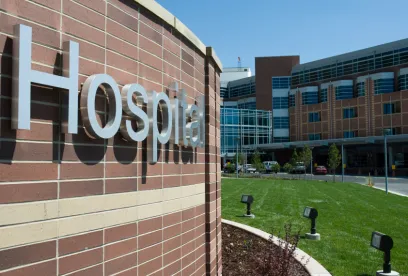The UK’s Competition and Markets Authority (CMA), has recently cleared a second hospital merger after only a Phase 1 review (involving an initial 40-day review period) based on the parties’ efficiencies/customer benefits arguments, despite the fact that the CMA believed that the merger may result in a substantial lessening of competition (SLC).
It is quite unusual for the CMA to clear a merger believed to give rise to an SLC risk on the basis of efficiencies/customer benefits without a detailed Phase 2 review (taking an additional 24 – 32 weeks). The CMA’s willingness to do so in this case confirms a trend for the CMA being prepared to apply the merger control rules more flexibly for hospital mergers, recognizing the unique market features in this sector and demonstrating the CMA’s willingness not to allow the merger control regime to obstruct efforts to improve NHS patient care via mergers.
On 15 March 2018, the CMA cleared a merger between Derby Teaching Hospitals Foundation Trust and Burton Hospitals Foundation Trust because it “is expected to result in substantial patient benefits” and “these outweigh any potential competition concerns that may arise as a result of the merger”. Only a press release has been issued at this time, but we look forward to reading which efficiencies/patient benefits have convinced the CMA!
This follows the CMA’s decision on 30 August 2017 which found that,
“whilst the merger between Heart of England NHS Foundation Trust (HEFT) and University Hospitals Birmingham NHS Foundation Trust (UHB) could give rise to competition concerns across a number of elective specialties, these were outweighed by the substantial improvements to patient care that were expected to arise”.
The CMA noted that the merger will give rise to 11 efficiencies/patient benefits such as improved waiting times for diagnosis and treatment, improved culture and staff morale, improved recruitment and retention of staff and improved referral to treatment times in certain specialised services (neurology and plastic surgery). The CMA concluded that the clearance decision
“reflects the quality of the benefits case put forward in this instance and the consistent and detailed advice of NHS Improvement”.
The CMA also in August 2017 cleared a merger between Central Manchester University Hospitals NHS Foundation Trust (CMFT)/University Hospital of South Manchester NHS Foundation Trust (UHSM) this time in the context of a “fast-track” Phase 2 and again accepting the parties’ efficiencies case, concluding that the merger would give rise to efficiencies/patient benefits such as: reduced time to diagnosis and treatment for heart attack patients, reduced waiting time for assessment of mini-stroke patients, reduced mortality in vascular surgery and reduced length of stay for patients suffering a fractured neck of femur. Again, the CMA found that
“the hospitals involved presented clear evidence and a well-reasoned case as to how the merger would be beneficial to patients and we received NHS Improvement’s advice on this – which helped us to reach our decision to clear the merger”.




 />i
/>i

